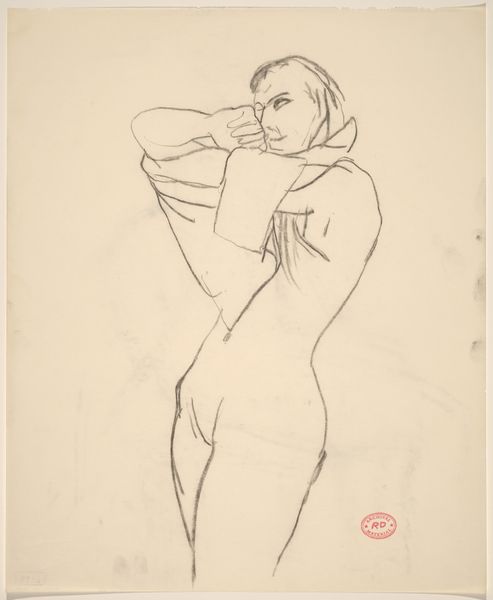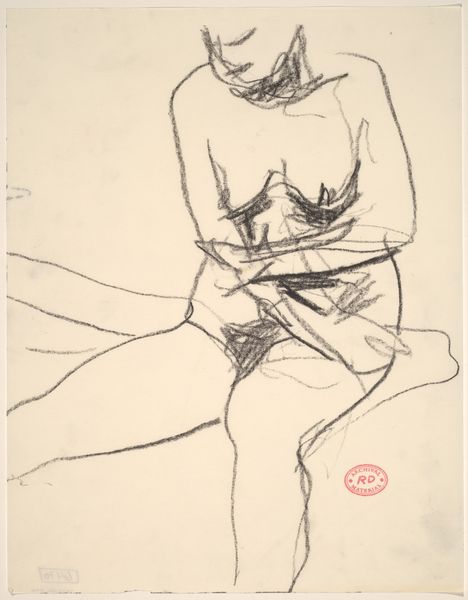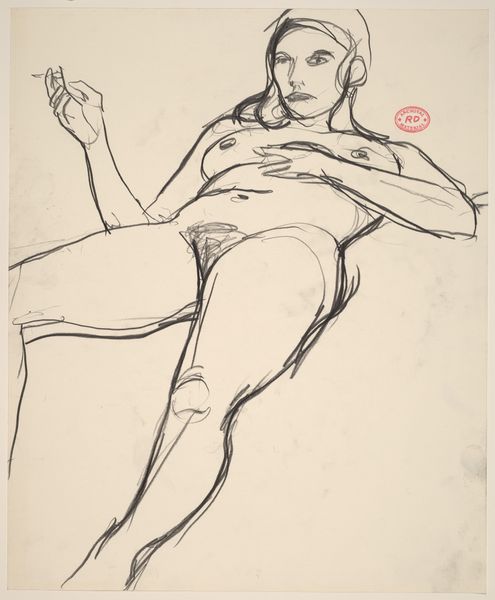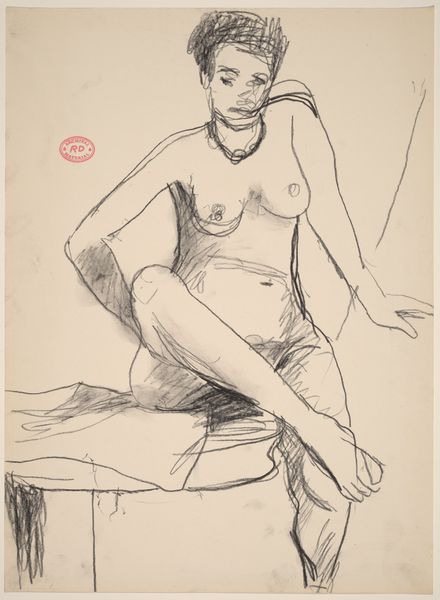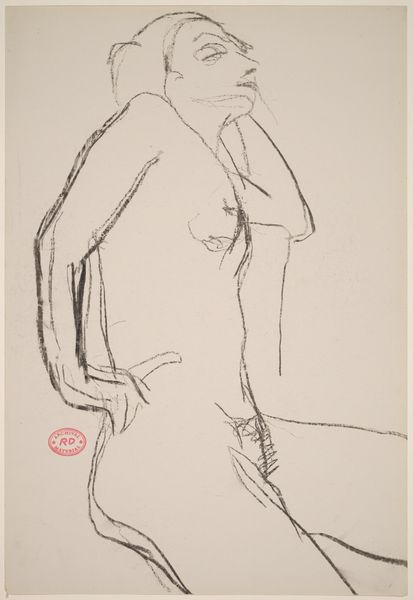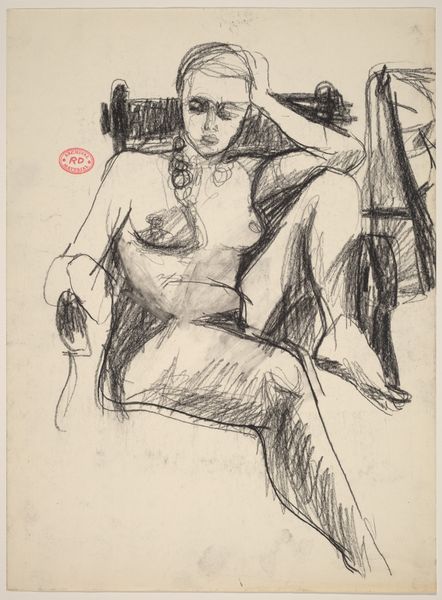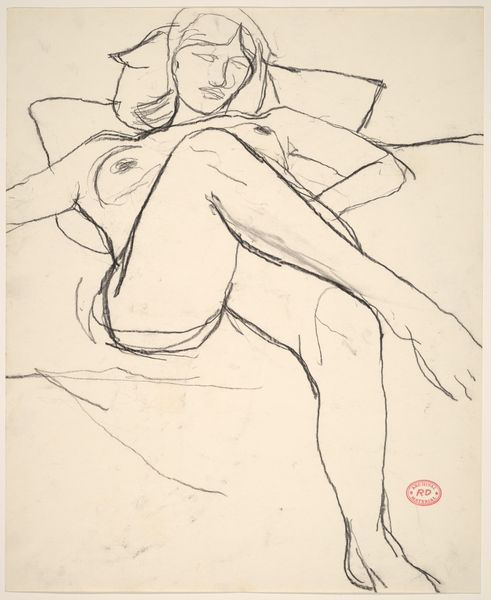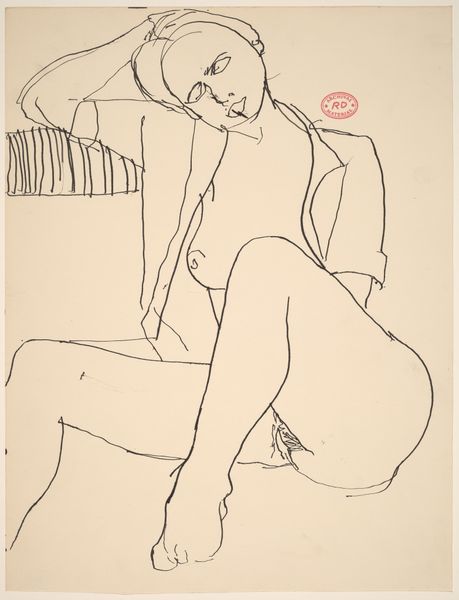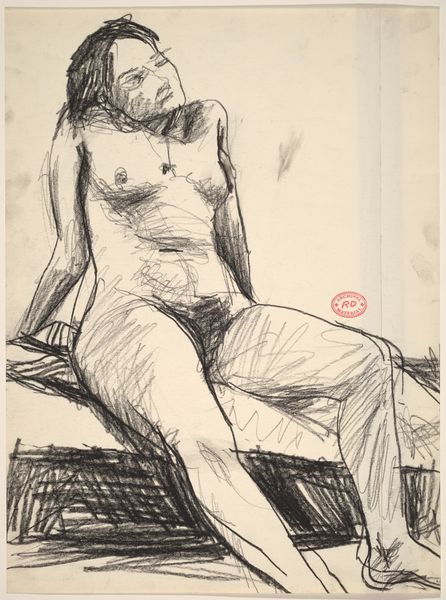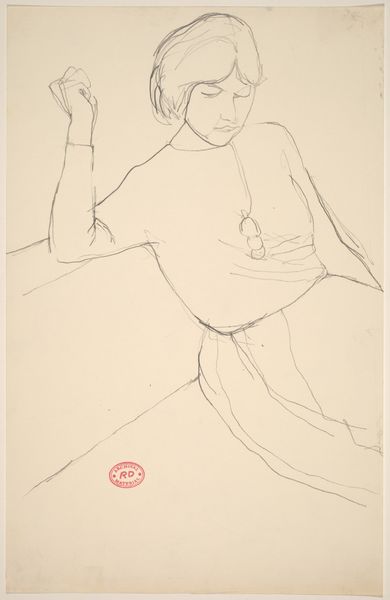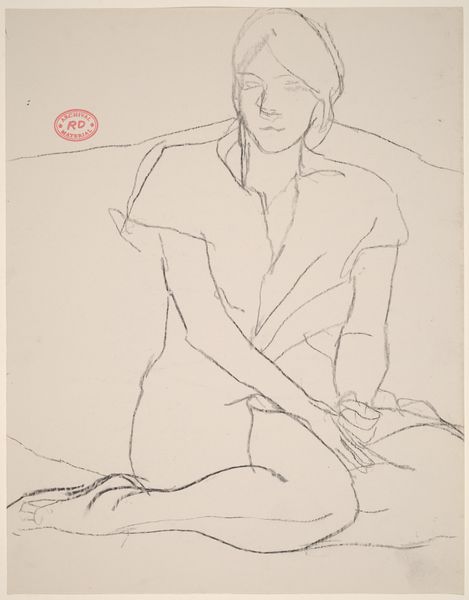![Untitled [female nude leaning back with hands to shoulders] by Richard Diebenkorn](/_next/image?url=https%3A%2F%2Fd2w8kbdekdi1gv.cloudfront.net%2FeyJidWNrZXQiOiAiYXJ0ZXJhLWltYWdlcy1idWNrZXQiLCAia2V5IjogImFydHdvcmtzLzEwYjc5OWMyLWQ4ZjYtNDNjMC04OTkwLWExNTQ3MWM5N2JhYy8xMGI3OTljMi1kOGY2LTQzYzAtODk5MC1hMTU0NzFjOTdiYWNfZnVsbC5qcGciLCAiZWRpdHMiOiB7InJlc2l6ZSI6IHsid2lkdGgiOiAxOTIwLCAiaGVpZ2h0IjogMTkyMCwgImZpdCI6ICJpbnNpZGUifX19&w=3840&q=75)
Untitled [female nude leaning back with hands to shoulders] 1955 - 1967
0:00
0:00
drawing, pencil
#
portrait
#
abstract-expressionism
#
drawing
#
ink drawing
#
pen sketch
#
pencil sketch
#
figuration
#
bay-area-figurative-movement
#
pencil
#
nude
Dimensions: sheet (irregular): 35.6 x 26.7 cm (14 x 10 1/2 in.)
Copyright: National Gallery of Art: CC0 1.0
Curator: Immediately, I sense a certain vulnerability emanating from this sketch; the starkness and simplicity evoke a feeling of melancholy. Editor: Let's delve deeper. What stands before us is an untitled piece by Richard Diebenkorn, crafted sometime between 1955 and 1967. It's a drawing rendered in pencil, featuring a female nude leaning back with her hands to her shoulders. Curator: The gestural lines are remarkably economical. Note the contrast between the bolder outlines defining the figure’s form and the more tentative, almost hesitant, shading that suggests depth and volume. It’s a study in controlled ambiguity. Editor: Diebenkorn's association with Abstract Expressionism casts an important light here. While representational, the drawing also flirts with abstraction. This places it within a broader artistic climate exploring new definitions of the human form and identity in postwar America. The work comes across as a sort of modern odalisque, freed from historical trappings. Curator: Precisely! Consider the pose; it appears relaxed yet subtly tense. The model is reclined, but there is a discernible asymmetry that suggests both ease and internal unrest. What message could be decoded with these semiotics of the corporeal state? Editor: And consider Diebenkorn's position within California's art scene. He wasn't just an artist working in isolation. His engagement with other artists, galleries, and educational institutions like the California School of Fine Arts shaped his evolving approach to figuration. His shift toward abstraction also challenged viewers accustomed to more traditional modes of representation. Curator: Absolutely, by minimizing detail, Diebenkorn encourages viewers to actively engage with the image, completing it in their own minds. It demands a dialogue between the artwork and the observer, exceeding any simplistic interpretation. Editor: So, through a combination of gestural technique, art-historical context, and social milieu, we gain insight into Diebenkorn's work. We understand both its internal structure and external positioning. Curator: In viewing the drawing closely, I feel that my understanding of the relationship between representation and emotion has grown. Editor: I agree. Viewing "Untitled [female nude leaning back with hands to shoulders]" from these intertwined perspectives is a worthy experience.
Comments
No comments
Be the first to comment and join the conversation on the ultimate creative platform.
